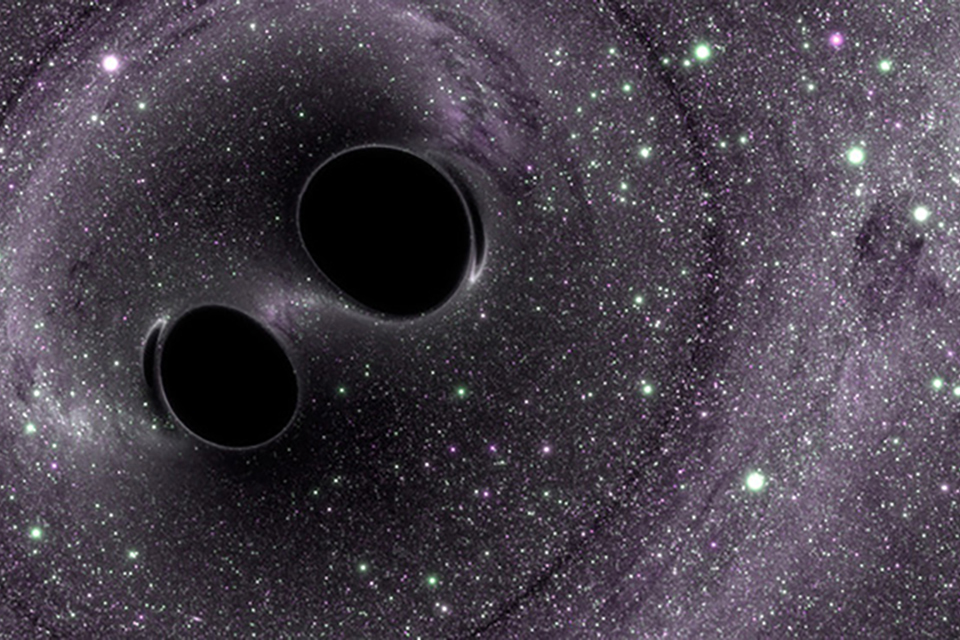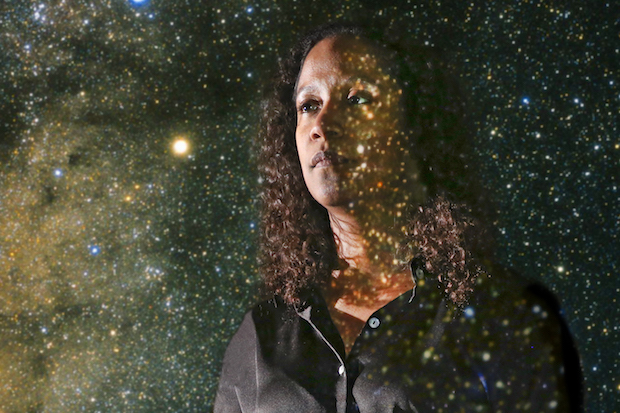Q&A with Marcelle Soares-Santos
Assistant Professor of Physics, Brandeis University
Office of the Vice Provost for Research: You’ve had quite an exciting couple of months. How did you get started?
Marcelle Soares-Santos: Early on, my work was focused on learning about the expansion of the universe and about cosmology using galaxy clusters. Clusters are fascinating objects because they are the largest structures in the universe. They are very sensitive about what happened in the history of the universe. However, recently I decided to try a different approach. The opportunity came up in 2013 when the LIGO collaboration released a call to the astronomical community at large for groups that would have the resources to do follow up observations of events that they can hear, to see if we could find the electromagnetic counterpart. When I saw this announcement I first thought, maybe this is too far away from what I’m doing right now, but on the second thought I realized it was quite close. It is a challenge that is well matched to the instruments that we have, a large camera and a large telescope. It would also enable me to study dark energy, the history of the expansion of the universe, in a new way, so I thought this could be a good interesting opportunity. These efforts have been quite successful.
OVPR: You mentioned that you can pinpoint the moment when your scientific curiosity took root. Can you tell me more about what happened at the mine when you were five or six years old?
MSS: Yes, it was the beginning of understanding that there were bigger questions out there that I became curious about. The story captured my imagination because of the setting. My class went to an open mine in Brazil, so we could see this vast gigantic area, and they had an explosion scheduled for when we were there. They were blasting open the side of the mountain to expose ore, in this case iron ore. There was this beautiful explosion but no sound, and it took a significant amount of time until the sound arrived. Everyone was like, Oh wow do it again! To me I came to this fascinating realization—sight and sound were not arriving at the same time and it was really counterintuitive. But it stayed with me and I wanted to know more about this marvelous universe where counterintuitive things happen. It feels like magic until you start to learn about it. For me that was a turning point.
OVPR: What other big moments have happened in your career?
MSS: I think there were other moments that were important. For instance, when I went to high school, I started at a technical high school in Brazil. We had a lot more hands on labs-type experiences as compared to a regular high school. I realized that I liked building things and I thought that was really cool to have some piece that I built have some practical purpose. That part in me didn’t flourish again until I already had my PhD, when I helped build the camera that we used to do the science. So I think that experience building things in high school really stayed with me too.
OVPR: Tell me about the camera.
MSS: When I finished my PhD and was looking for postdoctoral positions, I knew I wanted to work on the dark energy survey. The timing was right, the experiment that was about to begin was going to have excellent data on galaxy clusters, which was still my area of interest. I really wanted to work on that project. I got a few offers, and I decided to go to Fermilab because the camera was being built there. That’s where my thinking from high school came back, and I thought it would be an opportunity for me to actually build something, to develop a new set of skills. I thought it was a good move career-wise, because very few people of my generation have the opportunity to touch the hardware that will be used for their science. The reason for that is that the hardware takes so long to develop. Then--even if it’s not my science--I could feel like, if someone else is doing science with hardware I helped build, I’m proud. I think that became an important part of deciding the direction my career would take after that.
OVPR: What’s it like to work with such a diverse group?
MSS: It’s fun to be part of a community and it’s interesting that I manage to meet people and get to know students from various universities in various places. Even though it’s all spread out, everyone is united by these common interests of seeing the science done and progress made. The fact that this community exists is very positive. My piece at Brandeis is just a small part of this bigger ecosystem, but we can make a unique contribution. In turn we bring some of that talent to enrich our work here. That’s the best part. Sometimes we think of scientists as people who are working alone, in the lab, and it’s a solitary endeavor, but I think that doesn’t have to be the case. It’s amazing, because sometimes you have a problem to solve and no idea how to do it but within a phone call, or an email, you can reach out to an expert to help.
OVPR: Do you get calls from other scientists?
MSS: Sometimes people call me because they want to join the effort and be part of it, and sometimes people call for guidance about how to translate what we found into a new theory. Those connections are happening. People are thinking about new models for what happens in the interior of the star, for example, and how the data we gathered can contribute to that. Those connections are happening, and I think that’s part of why this is so exciting. It’s more than a press conference on one day, it can have a lasting impact.

